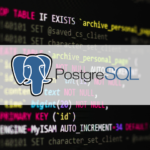How to Fix “Timed Out While Waiting for the Machine to Boot” in Vagrant on Windows and VirtualBox
Troubleshooting “Timed Out While Waiting for the Machine to Boot” with Vagrant and VirtualBox on Windows Hey everyone! If you’ve ever run vagrant up on Windows and hit that hair-pulling “Timed out while waiting for the machine to boot” error, you’re not alone! I recently tangled with this very problem while setting up a PHP […]










